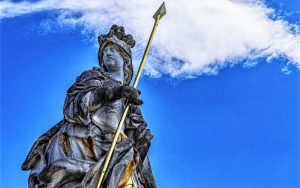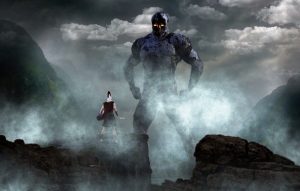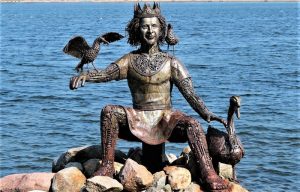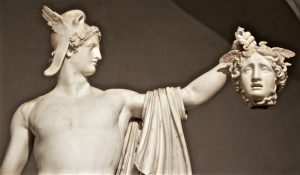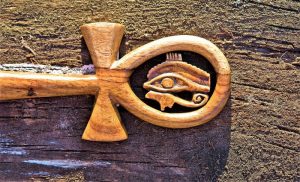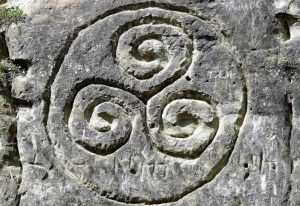Roman mythology
The ancient Romans had a rich mythology and, although much was derived from their neighbors and predecessors, the Greeks, the rich history of Roman people was taking power as it finally became an empire. Roman writers such as Ovid and Virgil documented and extended the mythological heritage of the ancient Mediterranean to give us such enduring and iconic figures as Aeneas, Vesta, Juno and the twin founders of Rome itself, Romulus and Remus.
What is Roman mythology?
Roman mythology was a form used by Greeks to define and conceive their gods, in which a set of gods and beliefs is born and forges consciousness and actions that ruled Roman people.
Origin
Some expert historians consider that Roman religion was an italic religion modified with time. According to other ancient sources, the city’ s foundation is related to Greece, as the founders had Trojan ancestry.
Rome made a unique and singular culture by adding knowledge from previous peoples. In 1100 B.C., Virgil wrote a poem in which he spoke about the empire’s foundation and origins. It is believed to have arisen from the Pelasgians, who were a primitive people who inhabited Greece.
Roman mythology characteristics
The main features of Roman mythology are described below:
- They were addicted to the gods and their beliefs.
- The stories of their gods begin to appear at the end of the republished period when Greek religious models were incorporated.
- Their gods had utilities for different activities carried out by the gods.
- They had gods for agricultural activities, animal protection, and environment.
- The Roman gods had a specific role that was linked to human activities.
Symbols
Some of the symbols that were used in Roman mythology are:
- Minotaur: half man and half bull that lived in the center of the labyrinth, built by King Minos of Crete to maintain the Minotaur.
- Labrys: it was a double-headed axe and was a symbol of Greek fascism.
- Fico Hand: Italian amulet of ancient origin used in Rome. It represents a gesture in the hand in which the thumb is pushed between the index and the twisted middle finger imitating evidently the heterosexual relations.
- The anchor: it was used by the artists who lived in the Mediterranean Sea areas to represent maritime navigation.
- The triumphal crown: it was a fence of branches, being at first laurel and then gold.
- The Labarum: it was a standard used by Roman emperors.
Gods of Roman mythology
The main gods that arose during Roman mythology were the following:
- Jano: god of the beginning.
- Vesta: goddess protector of homes.
- Saturn: god protector of crops and abundance.
- Ceres: goddess of agriculture after Saturn’s fall.
- Jupiter: god of heaven and firmament, responsible for rains and thunders. God of justice and truth.
- Mars: goddess of war.
- Diana: goddess of hunting and the moon, protector of rivers and springs.
- Minerva: daughter of Jupiter, protector of warriors, truth and wisdom.
- Venus: goddess of beauty and love.
Characters from Roman mythology
- Saturn: he was the agriculture and harvest He obtained power from his brother Titan who gave it to him under the condition that he did not conceive male children. His image is the one of an old man with white beard, with a tunic and a sickle in the hand that represents the time.
- Jupiter: He was the most powerful Olympian Son of Saturn, he was the father of all gods, who won the throne when he defeated his father in revenge for having devoured his brothers. He was represented with an eagle, the scepter and the ray.
- Neptune: Jupiter gave him the power to control waters and seas, and he lived in the depths of the sea. He had a great trident with which he created springs and controlled waves and storms. He had a bad character and his furious attacks unleashed great earthquakes.
- Juno: together with her husband and Minerva formed the Capitoline Triad, the three most important gods of Roman mythology. Among their attributes are the crown and the peacock.
- Vulcan: god of fire, volcanoes and blacksmithing.
- Venus: goddess of love, equivalent to Aphrodite.
- Pluto: god of the underworld, equivalent to Hades.
Outstanding myths and legends
- Juno, the Roman goddess: she was queen of the Greek divinities, considered as the goddess of marriage and wife of Zeus. Married to Jupiter her brother and with who was part, next to Minerva, of the so-called Capitoline Triad. The Romans saw her as a major deity in their religious pantheon. The gods Mars, Vulcan and Illytia were born as a result of her marriage to Jupiter.
- Minerva, the Roman goddess of war: her legend tells that she was Jupiter and Metis’ It is said that Metis was devoured by Jupiter and then he began to feel headache, so he looked for Vulcan who opened his head with an axe and from the wound was born a woman, Minerva, who helped Vulcan to fight in the gigantomachy in Troy’s war.
- Romulus and Remus were the founders of Rome. Legend says that they were Mars and Rhea’s During a coup d’état, Mars spied on an ostrich in the sacred forest and raped it. She had two children who were thrown to Tiber, and were rescued by a wolf, which was the sacred animal of Mars. Sometime later, the children were adopted by a human couple.
How to cite this article?
Briceño V., Gabriela. (2019). Roman mythology. Recovered on 4 January, 2025, de Euston96: https://www.euston96.com/en/roman-mythology/
